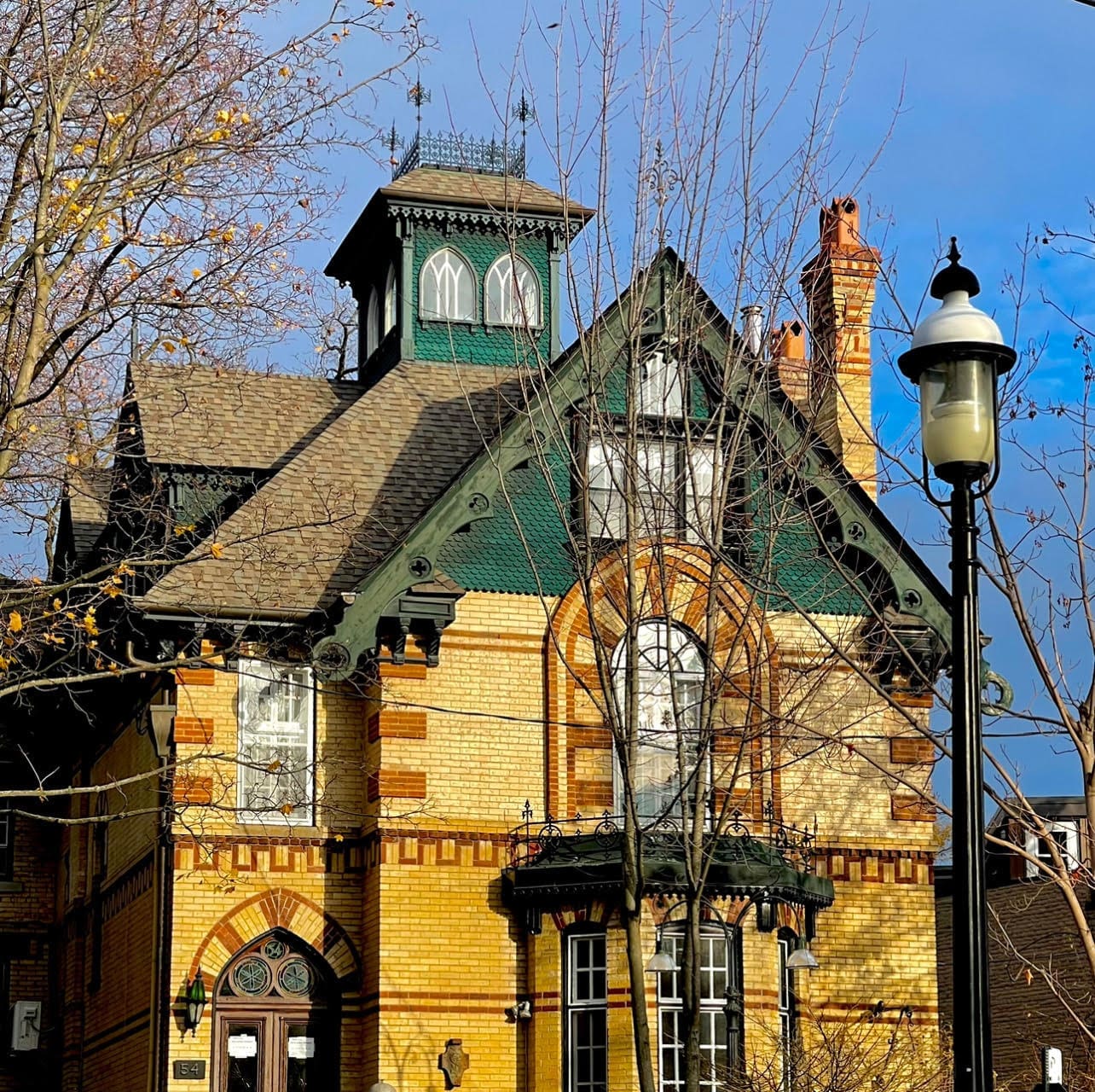When assessing houses, it’s usually easier to identify a really well-built one than a poorly constructed one. While not everyone is an expert in the properties of different materials, one can often sense quality upon entering a well-constructed home. Many may struggle to articulate what they appreciate, but intuition often guides us towards recognizing excellence.
Drawing on my experience as an architect and builder, I can readily identify construction issues and assess build quality. I’ve encountered numerous newly renovated or brand new homes on the market, and frankly, the craftsmanship in many is subpar. I’ve seen homes sitting, mid-construction, left exposed to rain and snow for weeks, leading to potential future problems when finishes are applied prior to the wood framing and sheathing drying out.
“They Don’t Build Them Like They Used To”
The notion that “they don’t build like they used to” often holds true. But, even a century ago, there were shoddy builders, particularly during periods of rapid urban growth. Walking through various neighbourhoods throughout Toronto reveals common builder-house styles, whether it’s semi-detached houses with aluminum dormer second floors or square-plan detached brick houses. Other cities, such as London, UK have common mass-constructed terrace homes that are prevalent all over the city, built in a hurry to accommodate growing populations in the early 20th century; the demising walls separating them are paper-thin.

In Toronto, much of the mass-produced housing from the early 20th century hasn’t stood the test of time well. While some have been neglected, others have simply deteriorated due to age. However, certain well-built homes, like brick bay-and-gable Victorians, have endured and are more resilient to decay.
Learn more about Toronto’s distinct architectural history with this blog post right here.
The Appeal of an Older Home
Older homes are typically situated in established neighbourhoods with thriving commercial streets, parks, and good schools. Stability and community upkeep are key, making older neighbourhoods appealing. They foster a culture of home maintenance, essential for preserving any house’s integrity; a leaky roof can eventually kill an excellent house. These types of neighbourhoods don’t just happen overnight, thus they become more cherished over time.
Entering an older house often evokes nostalgia, with its stained glass windows, intricate woodwork, and ornate plaster moldings. These historical details can be seamlessly integrated into modern renovations, offering a blend of old-world charm and contemporary living. The contrast can often be striking and sophisticated.
Building Materials that Stand the Test of Time
A century ago, abundant first-growth wood allowed for thicker materials in construction. Thick solid wood subfloors and roof sheathing were standard, providing durability against rot and warping. Plaster walls, though structurally robust, could pose challenges over time, yet they offer superior insulation and soundproofing compared to drywall. Exteriors of old homes were solid brick, so they formed a structure as well as a cladding for the houses. Solid brick construction consists of two layers of brick (or stone with brick on the inner layer), with the wood structure supported in pockets within the masonry. Today, and for the last half-century or more, brick homes were simply a veneer over a wooden frame.
Splendid homes with original century-old roof slates still grace neighborhoods like Rosedale, the Annex, and Forest Hill, showcasing their near-indestructible quality. However, the allure of asphalt shingles, marketed as easier to maintain, led many homeowners to replace traditional materials, only to find them deteriorating within 25 years.
Is it right to like older buildings more than new construction condos? I think yes! Read my blog to learn more about the appeal of older condos right here.
You Can Still Find Quality in New Builds, if You Know Where to Look
Over the past 20 to 30 years, discerning builders have reintroduced attention to detail and quality materials that were once overlooked mid-century. The emergence of durable and sustainable building products used in some recently built or renovated homes offers prospective buyers insight into a home’s overall craftsmanship.
In older homes, century-old floors, though refinished multiple times, often lack thickness, with nails popping due to thin tongue and groove joinery. Parquet flooring, popular in mid-century suburban homes, featured glued-down small wood pieces on plywood subfloors. Today, engineered wood floors with a variety of veneers provide stability and durability, surpassing flimsy laminate options. Oak was prevalent, but maple was often used as well, so they were quite hard and resistant to wear.
When I began building homes, we used 3/4 inch thick solid planks, which were nailed to subfloors made of thicker tongue and groove plywood screwed to the joists to prevent future squeaking. Today, there are many solid engineered flooring products that are 5/8 – 3/4 inches thick, composed of plywood with a decent finished wood veneer on the top layer.
Discover Toronto’s most coveted communities, read my neighbourhood guides here.
Pay Attention to the Material
A variety of woods, such as oak, cherry, walnut, and maple are featured in these dimensionally stable products which resist warping and provide a solid feel underfoot. In contrast to these are floppy plastic laminate floors, which often slap the subfloor as we walk along them and they are so thin that they often appear uneven. A level above those are “luxury vinyl plank” products, which, to me, is an amusing name. A quality build still uses thicker wood products giving timeless richness, guaranteed to last several generations.
Windows and doors made from solid wood offer superior quality and sound control compared to cheaper alternatives. High-quality windows often feature pre-specified coloured aluminum cladding for low maintenance. Cost premiums of better windows are worth it, as they provide less thermal transference through the frames, function better, and require less upkeep over time.
How does sustainability play into this? Read my blog post about sustainability in real estate right here.
A True Test of Quality
Millwork — cabinetry and trim — reveals craftsmanship quality. The craftsmanship of cabinetry often speaks volumes, evident even by simply opening a drawer and inspecting the materials used. While some may feature flimsy aluminum construction, others boast sturdy dovetailed Baltic birch boxes.
Unfortunately, many cabinets utilize melamine-clad particleboard, which lacks durability. Similarly, trim that appears like custom-made quality may actually be hastily assembled from painted MDF (medium-density fiberboard), susceptible to water damage if not properly primed on all sides. Unlike solid pine or poplar trim, MDF can swell irreversibly when exposed to moisture, resulting in unsightly damage. It’s disheartening to see builders cut corners, opting for cheap materials like oak-faced plywood for paneling in home offices, which compromises both aesthetics and durability.
Such practices, driven by profit, undermine the longevity of homes, leaving buyers with subpar quality beyond the warranty period.
The Definition of a Custom Home
A custom home is precisely that — an abode designed and constructed to meet the unique needs of a specific client. Unfortunately, many builders market speculative homes as “custom”, but these often lack the meticulous craftsmanship found in true custom builds. Such homes fail to showcase the distinctive materials and imaginative design elements that set them apart. Instead, they aim to entice unsuspecting buyers with superficial allure, masking underlying deficiencies.
During a recent open house, although the property appeared pristine to most, I keenly observed numerous flaws that would undoubtedly disappoint its future owner. While I maintained a discerning eye, I also posed challenging questions to the realtor, aiming to shed light on the home’s true quality. Just to be a little bit cruel…


How to Discern Quality Plumbing
Plumbing fixtures and hardware serve as indicators of a house’s craftsmanship. By tapping on faucets, one can discern whether they’re solid brass with chrome or nickel coating or merely plastic with a similar finish. While quality products are available from overseas, domestically sourced materials, handcrafted by local artisans, typically contribute to superior home construction compared to mass-produced items from Chinese factories.
How to Find Lasting Quality in a Home
Future-proofing is a crucial consideration when evaluating a home. This involves assessing how the house will perform over the years, particularly in terms of its mechanical and electrical systems and the durability of its materials. Investing in superior HVAC systems, despite higher initial costs, pays off in the long run with lower operational expenses and reduced maintenance needs.
Additionally, incorporating high-tech features that can adapt to evolving technology and software updates is essential. While modern conveniences may lose relevance over time, selecting a house with timeless construction quality can mitigate this risk.
Discover my post about smart home features for a refined lifestyle right here.
Sometimes, purchasing a well-maintained 10 to 15-year-old home from the original owner proves advantageous, as any issues would likely have been addressed. The durability of construction materials, such as granite countertops, adds to a home’s longevity, although style trends may evolve.
Regardless, if high-quality finishes were employed in the original construction of the home, these superior finishes may be representative of the entire consideration of materials and techniques used through the construction of the home, ensuring lasting appeal and value.
Ultimately, assessing a house’s quality goes beyond aesthetics, regardless of age; it involves feeling the solidity of its structure, inspecting roofing and hardware, knocking on the doors and walls to sense their density, and observing how materials have aged. While TV shows provide insights and education, firsthand experience remains paramount and is the most reliable gauge of a home’s true quality.
Do you have questions about buying or selling a home in Toronto? Reach out directly by calling 416-824-1242, emailing robert@lifeofluxury.ca, I would be happy to guide you!

Guiding Your Experience
Learn more about how I work with you to create unique strategies that help make your dream lifestyle your actual lifestyle.






